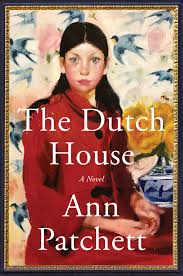Chapter 20
byChapter 20 opens with the narrator reflecting on the weight of his past, particularly the story of his sister, Maeve, which he initially set out to tell but finds himself entangled in other aspects of his life. Three years have passed since Maeve’s death, and during this time, his marriage to Celeste has unraveled, adding another layer of loss and change. Celeste, who never fully embraced the Dutch House, finally confesses that she never liked the home, a revelation that contradicts the narrator’s initial belief that gifting her the house would serve as a meaningful gesture of love. This moment forces him to reassess his perception of their relationship, realizing that their disconnect was not solely about Maeve’s presence but about their fundamental differences as a couple. As Chapter 20 unfolds, it becomes clear that the narrator is grappling not just with the past but also with the deeper truths about love, family, and identity.
The absence of Maeve profoundly shifts the narrator’s perspective, pulling him closer to his children and making him more present in their lives. Before, his attachment to his sister had overshadowed his ability to fully engage with his own family, but in her absence, he begins to reevaluate his priorities. The loss exposes the cracks in his marriage, making him recognize that Celeste’s resentment toward Maeve was never the real issue—their relationship was strained by something deeper, something beyond his sister’s influence. His introspection extends to his estranged mother, who returns to care for Andrea, his father’s second wife, despite years of separation from the family. The narrator’s complex feelings toward his mother, once defined by resentment, begin to shift as he watches her step back into the family dynamic in an unexpected role of caregiver.
As the narrator visits the Dutch House following Andrea’s death, he is struck by the ways in which the home continues to exist unchanged while the people connected to it evolve, disappear, or return under different circumstances. The house, once a symbol of his childhood, stands as a reminder of the family’s history, a structure filled with memories both cherished and painful. Conversations with former staff members rekindle moments from the past, reinforcing the idea that homes hold more than just physical presence—they embody the legacies of those who lived within their walls. The narrator’s reflections reveal how time alters perspective, making him question whether his past grievances were as significant as they once seemed or if they were merely stepping stones toward understanding.
May, the narrator’s daughter, emerges as a beacon of the family’s future, her ambitions and sense of self starkly contrasting with his and Maeve’s experiences. Unlike her father and aunt, who were deeply tied to the Dutch House as a relic of loss and longing, May sees it as something entirely different—a place from which she can move forward rather than remain tethered to the past. Her independence and determination symbolize a generational shift, one that acknowledges the past without allowing it to dictate the future. Through his conversations with May, the narrator confronts the reality that time does not stand still, and neither should he.
By the chapter’s conclusion, the narrator has undergone a significant transformation, moving from one defined by nostalgia and unresolved emotions to someone more accepting of life’s inevitable changes. He recognizes that while the Dutch House played an integral role in shaping his family’s trajectory, it does not have to define his or his daughter’s future. The novel’s themes of memory, identity, and reconciliation come full circle as the narrator learns to embrace the idea that history, while permanent, does not have to serve as an anchor preventing forward movement. In acknowledging the Dutch House as both a relic of his past and a foundation for something new, he finds peace in the understanding that love, loss, and legacy are intertwined, but they do not have to confine him.


